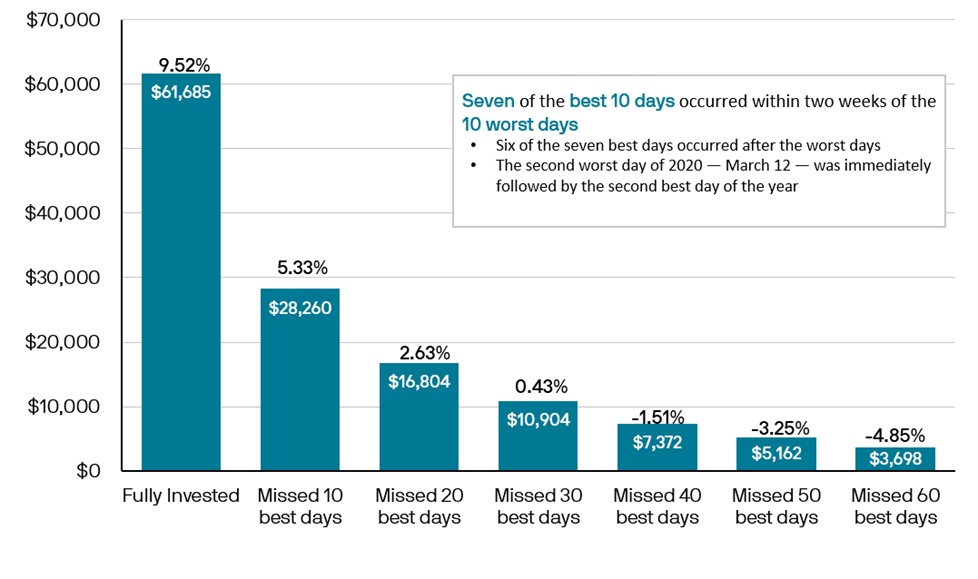Retirement Gets a Boost – 9 Key Takeaways on SECURE Act 2.0
The end of 2022 was wild! I watched my beloved Georgia Bulldogs squeak out a College Playoff semi-final win over Ohio State just as the clock struck midnight in an epic comeback that may have taken several years off my life. It was a fantastic way for me to say goodbye to 2022 and hello to 2023. The Bulldogs weren’t the only ones squeaking out wins in the final hours of 2022 though. Congress finally came together to pass the much-anticipated SECURE Act 2.0 that had been rumored for the last year.
A little rusty on SECURE Act 1.0? A lot of life has happened since it was passed including living in the midst of a pandemic! At the end of 2019, The Setting Every Community Up for Retirement Enhancement Act of 2019, popularly known as the SECURE Act, was signed into law. Now called SECURE Act 1.0, it included provisions that raised the requirement for mandatory distributions from retirement accounts and increased access to retirement accounts.
Two of the most notable provisions from SECURE Act 1.0 was the increase of the Required Minimum Distribution (RMD) age from 70 ½ to 72 and that many Inherited IRAs had to begin using the 10-year distribution rule. While we’ve been busy updating financial and estate plans over the last few years, Congress has been increasingly focused on trying to enhance the original landmark bill that was enacted barely three years ago.
Tucked inside a just-passed 4,155-page, $1.7 trillion spending bill are plenty of goodies, including another overhaul of the nation’s retirement laws.
[[https://images.thinkadvisor.com/contrib/content/uploads/documents/415/479719/GA_SECURE-2.0-Act-of-2022_Section-by-Section-Summary-FINAL.pdf Dubbed SECURE Act 2.0]], the bill enjoys widespread bi–partisan support and builds on SECURE Act 1.0 by strengthening the financial safety net by encouraging Americans to save for retirement.
Let’s review 9 key takeaways from SECURE Act 2.0.
9 key takeaways on SECURE Act 2.0
1.RMD Age will rise to 73 then 75.
As we reviewed earlier, 1.0 increased the age for taking the required minimum distribution, or RMD,to 72 years from 70½. 2.0 brings an increase again from 72 to 73 then to 75 by 2033.
If you turn 72 this year, the age required for taking your RMD rises to 73 with 2.0.If you turned 72 in 2022, you’ll remain on the prior schedule.
If you turn 72 in 2023, you may delay your RMD until 2024, when you turn 73. Or you may push back your first RMD to April 1, 2025. Just be aware that you will be required to take two RMDs in 2025, one no later than April 1 and the second no later than December 31.
Starting in 2033, the age for the RMD will rise to 75.
Employees enrolled in a Roth 401(k) won’t be required to take RMDs from their Roth 401(k). That begins in 2024.
The new rules recognize that Americans are living and working longer.
2. RMD penalty relief.
Beginning this year, the penalty for missing an RMD is reduced to 25% from 50%. And 2.0 goes one step further. If the RMD that was missed is taken in a timely manner and the IRA account holder files an updated tax return, the penalty is reduced to 10%.
But let’s be clear, while the penalty has been reduced, you’ll still pay a penalty for missing your RMD.
3. A shot in the arm for employer-sponsored plans.
Too many Americans do not have access to employer plans or simply don’t participate. Starting in 2025, companies that set up new 401(k) or 403(b) plans will be required to automatically enroll employees at a rate between 3% and 10% of their salary.
Automatic escalation will also be required for these new plans starting in 2025. Contribution percentages must automatically increase by one percent on the first day of each plan year following completion of a year of service until the contribution is at least 10 percent, but no more than 15 percent of eligible wages.
The new legislation also allows for automatic portability, which will encourage folks in low-balance plans to transfer their retirement account to a new employer-sponsored account rather than cash out.
To encourage employees to sign up, employers may offer gift cards or small cash payments. Think of it as a signing bonus. Employees may opt out of the employer-sponsored plan.
4. Increased 401(k) (and similar plans) catchup provisions.
In 2023, if you’re 50 or older and participating in a 401(k) plan, you’re allowed to make additional catch-up contributions to your retirement accounts. Currently, those catch-up contributions are limited to $7,500 for most workplace plans and $1,000 for Roth and traditional IRAs.
In 2025, 2.0 increases the catch-up provision for those between 60 and 63 from $7,500 in 2023 to $10,000, (the greater of $10,000 or 50% more than the regular catch-up amount).
Starting in 2024, Catch-up dollars are required to be made in Roth dollars if your wages are over $145,000.
5. Emergency Savings Accounts Linked to Retirement Plans.
Beginning in 2024, retirement plans may offer linked “emergency savings accounts” that permit non-highly compensated employees to make Roth (after-tax) contributions to a savings account within the retirement plan. Employers must match contributions as if they were deferrals made to the employer plan (employer match goes into the retirement plan). Assets must be held in cash or similar investments. Participants must have monthly access to the funds and the first four distributions must be at no cost to the employee. The distribution will be penalty [MB1] [AK2] free.
Upon termination of employment, any emergency savings account can be converted to another Roth account within the plan or can be distributed to the participant.
6. Disaster relief.
You may withdraw up to $22,000 penalty-free from an IRA or an employer-sponsored plan for federally declared disasters. Withdrawals can be repaid to the retirement account.
7. Help for survivors.
Victims of abuse may need funds for various reasons, including cash to extricate themselves from a difficult situation. 2.0 allows a victim of domestic violence to withdraw the lesser of 50% of an account or $10,000 penalty-free.
8. Student loan payments will qualify for 401(k) match.
Starting next year, employers are allowed to match student loan payments made by their employees. The employer’s match must be directed into a retirement account, but it is an added incentive to sock away funds for retirement. For those torn between whether they should pay down student loan debt or contribute to a 401(k) plan to receive the company match, this is a welcomed relief.
9. Rollover of 529 plans.
Starting in 2024 and subject to annual Roth contribution limits, assets in a 529 plan can be rolled into a Roth IRA, with a maximum lifetime limit of $35,000. The rollover must be in the name of the plan’s beneficiary. The 529 plan must be at least 15 years old.
In the past, families may have hesitated in fully funding 529s amid fears the plan could wind up being overfunded and withdrawals would be subject to a penalty. Though there is a $35,000 cap, the provision helps alleviate some of these concerns.
Whew! That is a very highly level recap of 9 key takeaways of SECURE Act 2.0. Keep in mind that the bill is voluminous and had approximately 90 changes!
What Does it All Mean for You?
This bill reminds us that the only constant thing in life is change. With so many changes over a variety of years, there is a great deal to keep up with in the coming years. As with most bills, I anticipate we will see additional guidance on various provisions. Some of the items are immediate while others will be implemented years down the road.
If you are still working and have an employer sponsored retirement plan like a 401(k), pay close attention to the communication your employer provides. It will take some time for retirement plan Recordkeepers such as Empower, Principal and Fidelity to update their technology platforms to implement the provisions such as the Emergency Savings Accounts and the Student Loan Match. The good news is that these provisions have been rumored for awhile and many of the key players in the retirement industry have been working diligently as they anticipated they would eventually become law.
For those of you that are transitioning to retirement soon, the catch-up provisions will be particularly important to you. It will vary by current age and timing of the law.
Finally, for retirees, the changes to RMD age may create additional planning opportunities as well as some relief if your RMD is not taken in a timely manner.
Regardless of your life stage, it’s more important than ever to be in close communication with your Financial Advisor.
Final thoughts
With so many major changes, providing only 9 key takeaways for the Secure Act 2.0 may seem inadequate. I promise that providing many more would be overwhelming – like trying to drink from a water hose.
The one thing I know for sure is that many Americans lack adequate savings, and the just-enacted bill helps address some of the challenges many Americans face as they march toward retirement. It’s a step in the right direction and encouraging to see Congress working together to further help Americans retire with dignity.
We are always here to assist you, answer your questions, and tailor any advice to your needs. Additionally, feel free to reach out to your tax advisor with any tax-related questions.
by: Jennifer Fensley, CFP®, CRPS®
Sources: [[https://images.thinkadvisor.com/contrib/content/uploads/documents/415/479719/GA_SECURE-2.0-Act-of-2022_Section-by-Section-Summary-FINAL.pdf Secure Act 2.0 Act of 2022]]; [[https://www.fidelity.com/learning-center/personal-finance/secure-act-2 SECURE 2.0: Rethinking Rretirement Ssavings]]; [[https://www.schwab.com/learn/story/congress-passes-major-boost-to-retirement-savings Congress Passes Major Boost to Retirement Ssavings]]; [[https://www.wsj.com/articles/WP-WSJ-0000441889 The 401(k) and IRA Changes to Consider After Congress Revised Many Retirement Laws]]
CapSouth Partners, Inc, dba CapSouth Wealth Management, is an independent registered Investment Advisory firm. Information provided by sources deemed to be reliable. CapSouth does not guarantee the accuracy or completeness of the information. CapSouth does not offer tax, accounting or legal advice. Consult your tax or legal advisors for all issues that may have tax or legal consequences. This information has been prepared solely for informational purposes, is general in nature and is not intended as specific advice. Any performance data quoted represents past performance; past performance is no guarantee of future results. This article contains external links to third party content (content hosted on sites unaffiliated with CapSouth). CapSouth makes no representations whatsoever regarding any third party content/sites that may be accessible directly or indirectly from this article. Linking to these third party sites in no way implies an endorsement or affiliation of any kind between CapSouth and any third party, including legal authorization to use any trademark, trade name, logo, or copyrighted materials belonging to either entity.




